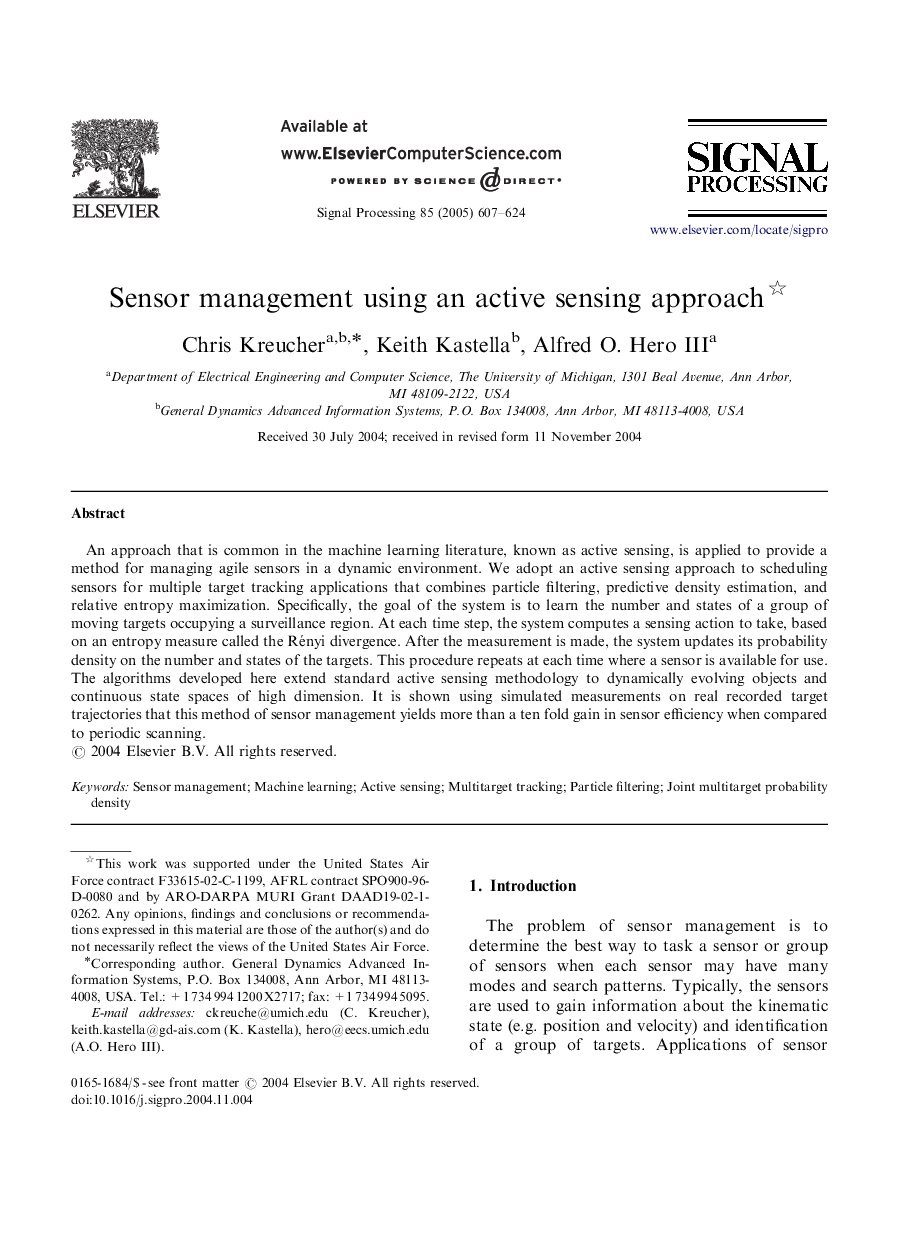| Article ID | Journal | Published Year | Pages | File Type |
|---|---|---|---|---|
| 10369981 | Signal Processing | 2005 | 18 Pages |
Abstract
An approach that is common in the machine learning literature, known as active sensing, is applied to provide a method for managing agile sensors in a dynamic environment. We adopt an active sensing approach to scheduling sensors for multiple target tracking applications that combines particle filtering, predictive density estimation, and relative entropy maximization. Specifically, the goal of the system is to learn the number and states of a group of moving targets occupying a surveillance region. At each time step, the system computes a sensing action to take, based on an entropy measure called the Rényi divergence. After the measurement is made, the system updates its probability density on the number and states of the targets. This procedure repeats at each time where a sensor is available for use. The algorithms developed here extend standard active sensing methodology to dynamically evolving objects and continuous state spaces of high dimension. It is shown using simulated measurements on real recorded target trajectories that this method of sensor management yields more than a ten fold gain in sensor efficiency when compared to periodic scanning.
Related Topics
Physical Sciences and Engineering
Computer Science
Signal Processing
Authors
Chris Kreucher, Keith Kastella, Alfred O. Hero III,
